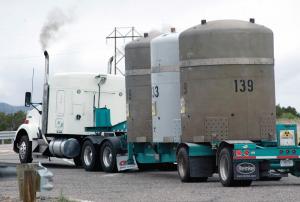Reviving hope for spent-fuel storage.
John Bewick is a Fortnightly contributing editor and formerly was secretary of environmental affairs for the Commonwealth of Massachusetts. He also serves as president of Compliance Management Inc., based in Hingham, Mass. He holds graduate degrees in nuclear science and business administration, and is covering the DOE nuclear Blue Ribbon Commission’s work on an ongoing basis for Fortnightly and Fortnightly.com.
ACKNOWLEDGMENTS: The author acknowledges the following sources for their contributions to this article: Gov. Mike Leavitt of Utah; Rep. John Heaton from Carlsbad, N.M.; Secretary of the New Mexico Environment Department Ron Curry; Prof. John Applegate, Indiana University; Cynthia C. Kelly, president of the Atomic Heritage Foundation; Prof. Clifford Singer, University of Illinois; and Don Hancock, director, Nuclear Waste Safety Program, Southwest Research and Information Center.
When the Obama administration declared the Yucca Mountain nuclear waste project dead in January 2010, plant owners and regulators across the country were outraged—but not surprised.

Since the 1980s, the industry has seen about $7 billion of the Congressionally-mandated nuclear waste fund poured into the Yucca Mountain project, with apparently nothing to show for ratepayers’ money.1 With about one-third of the fund now spent, the cancellation of DOE’s Yucca Mountain project has further diminished the belief that the U.S. DOE ever will site a repository for spent nuclear fuel.
The reaction from states and localities has both shaped and complicated the path forward in the United States. In Utah, for instance, a proposal in the late 1990s to site an interim storage facility for dry casks containing spent nuclear fuel rods met with fierce local opposition, spearheaded by then-Governor Mike Leavitt. The opposition in Utah continues today, primarily because decision makers are convinced that waste received never would be removed (see “Utah Gov. Leavitt: ‘No Such Thing as Interim Storage’”).
Utah’s position and the intense battle over Yucca Mountain in Nevada exemplify the almost universal opposition to such facilities throughout the United States.
